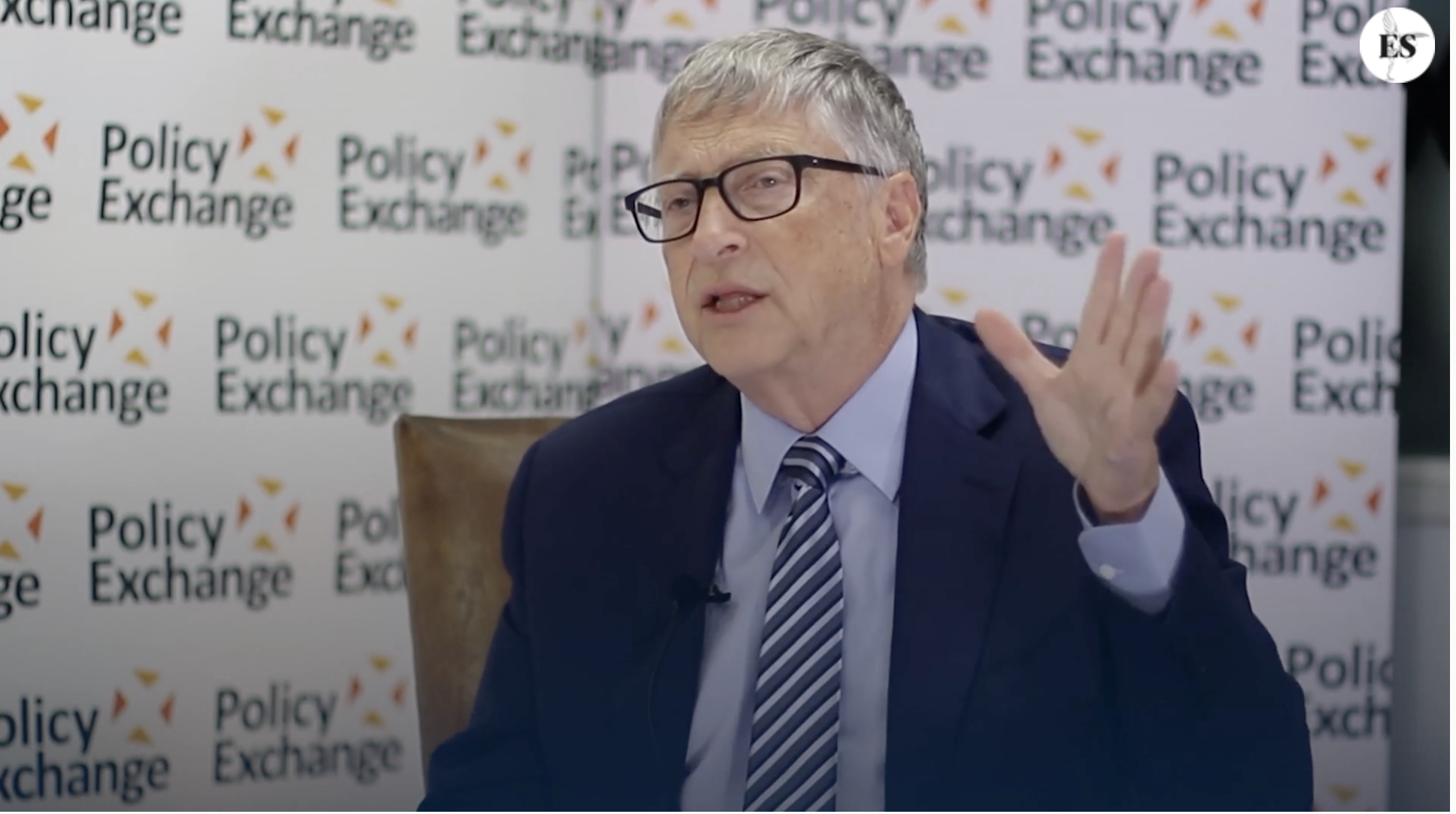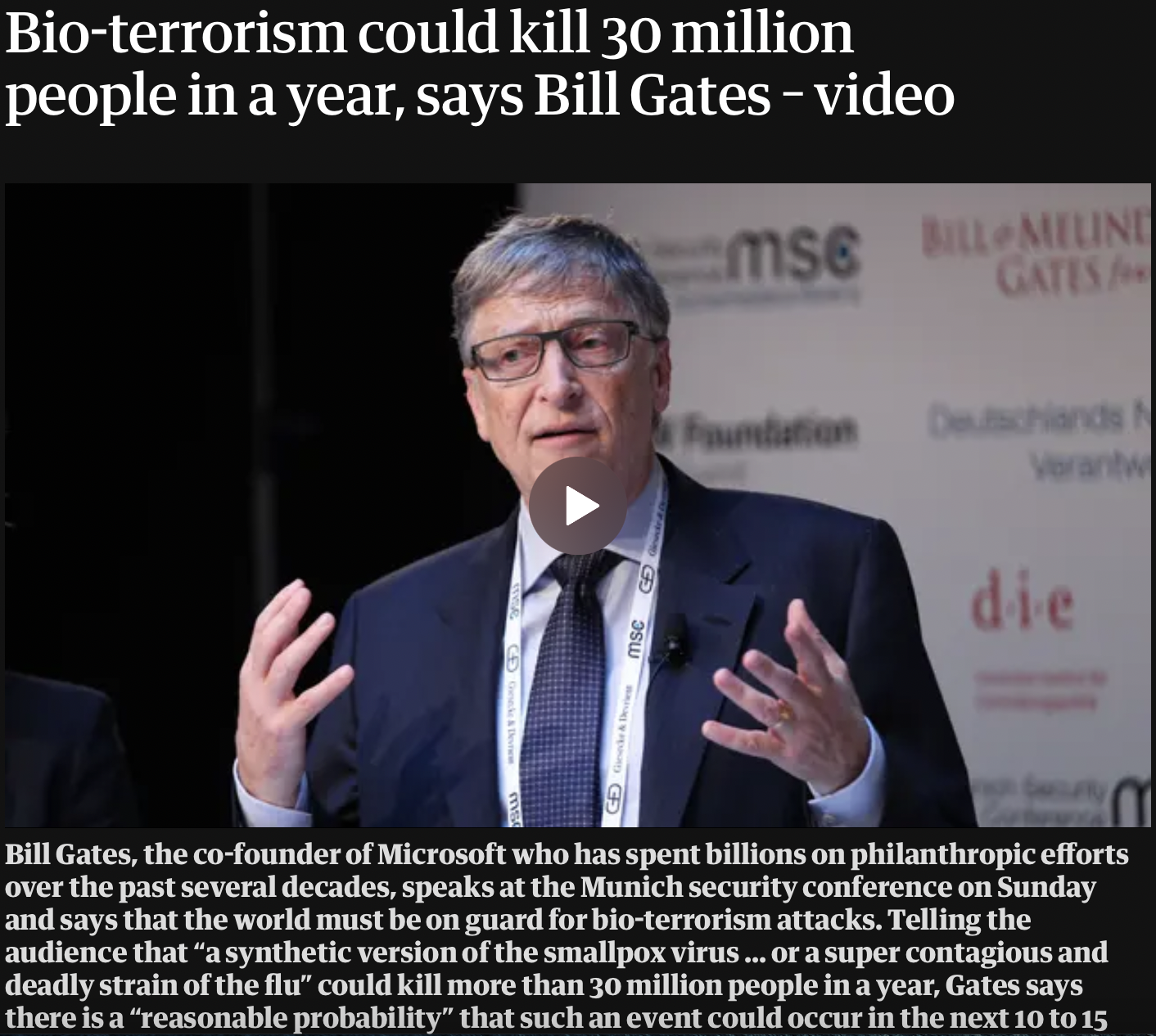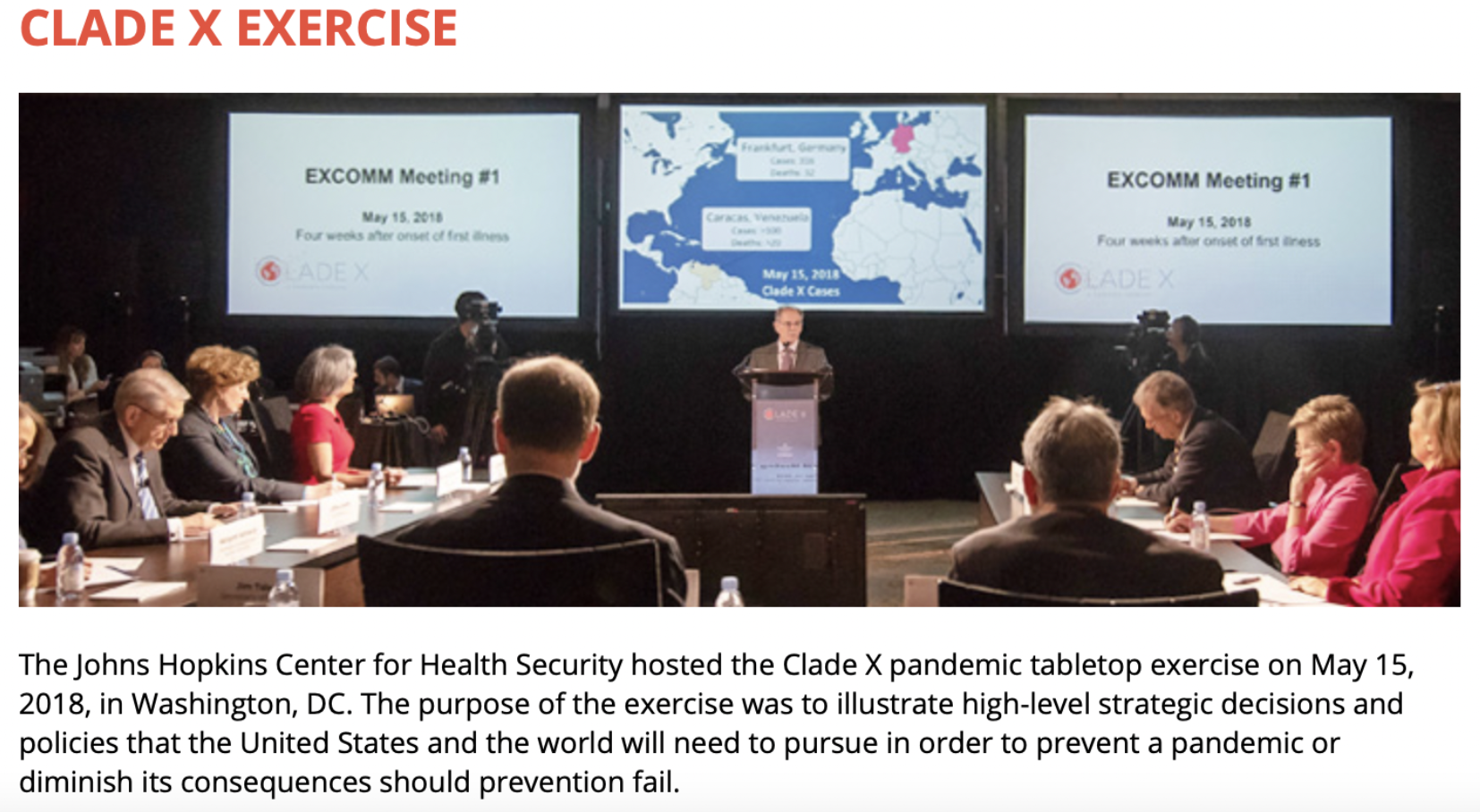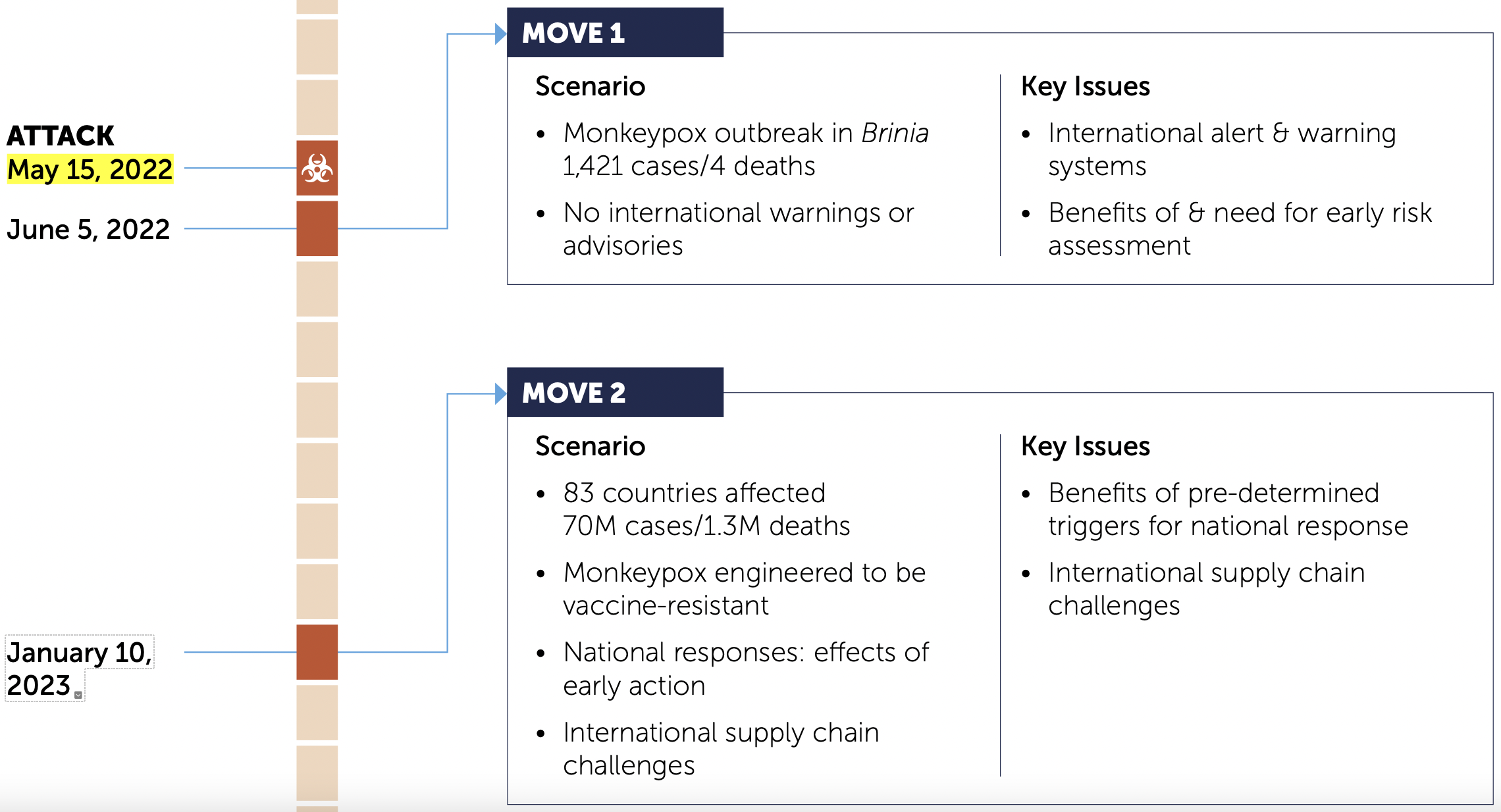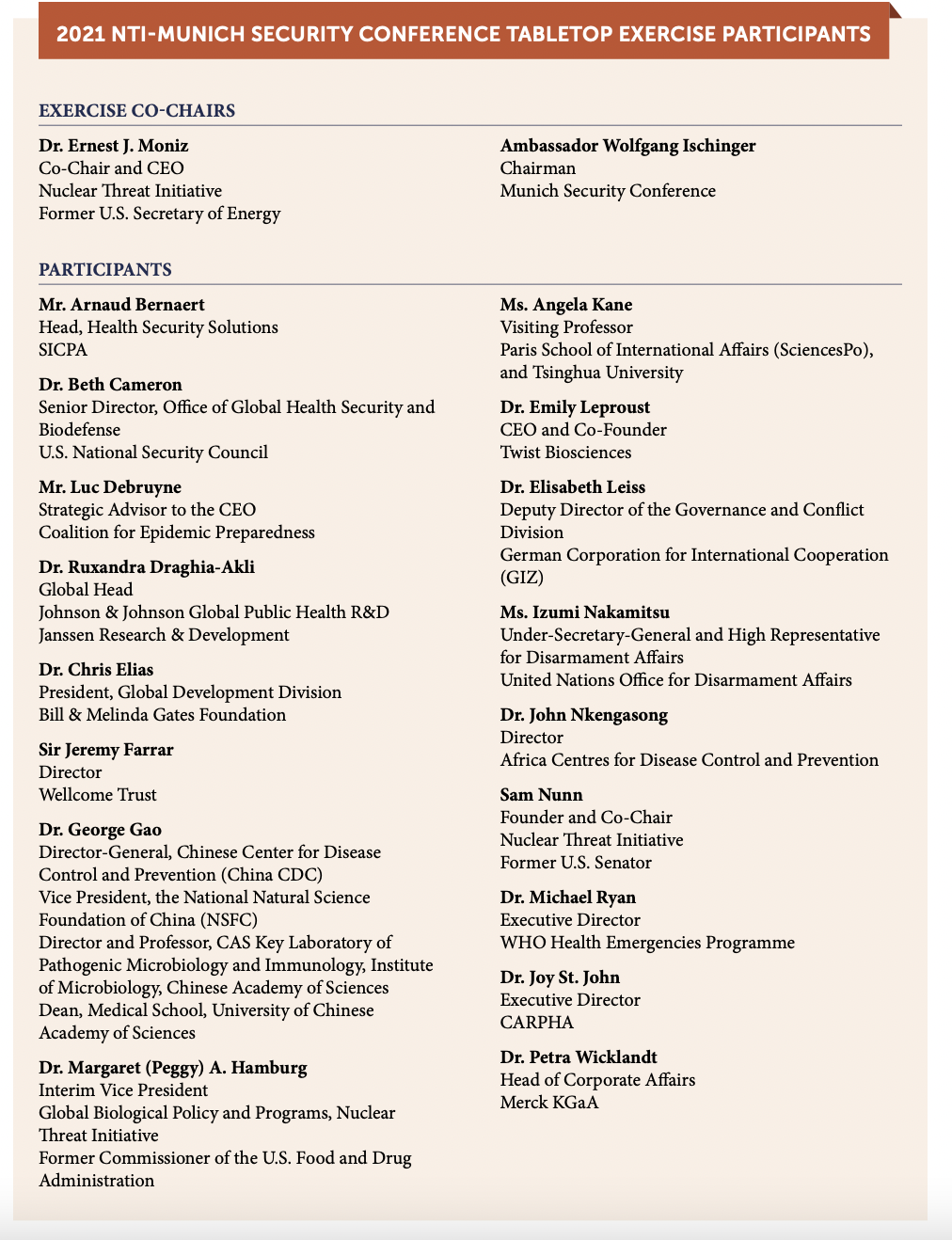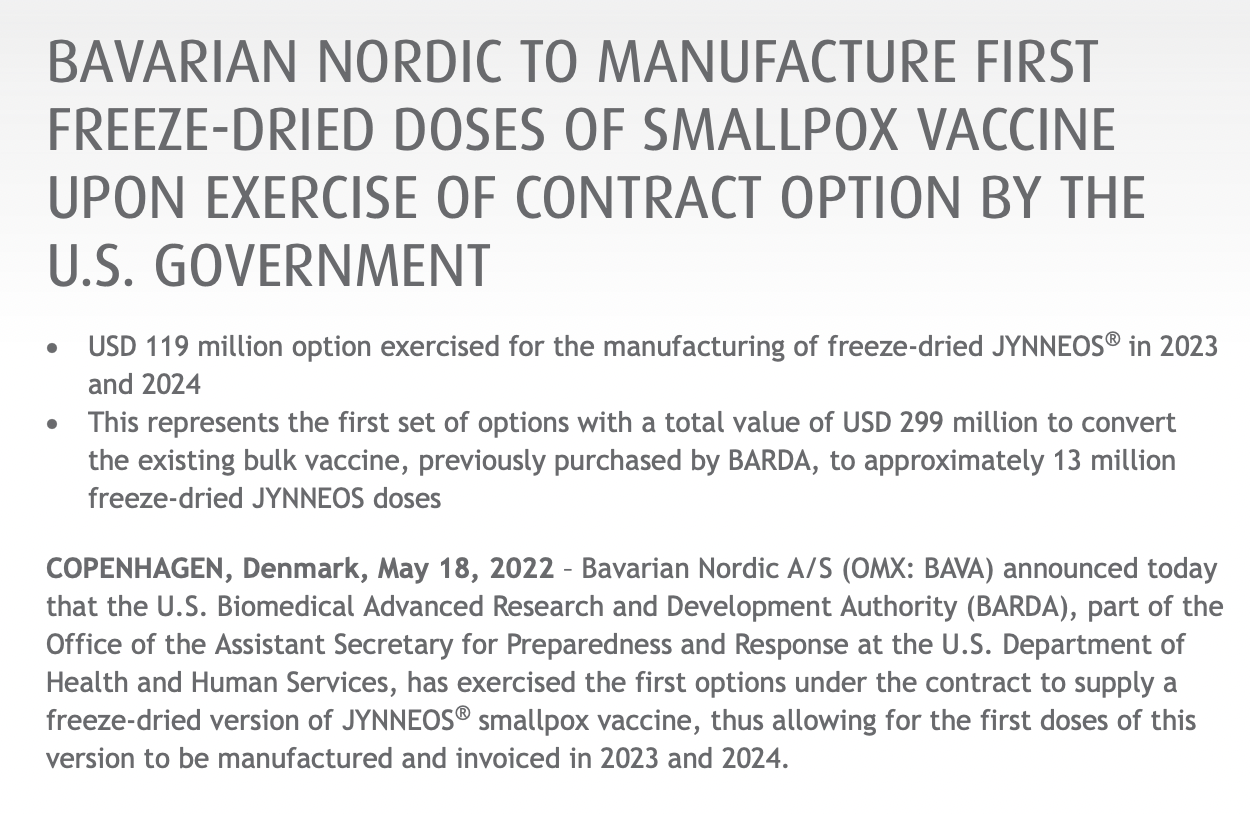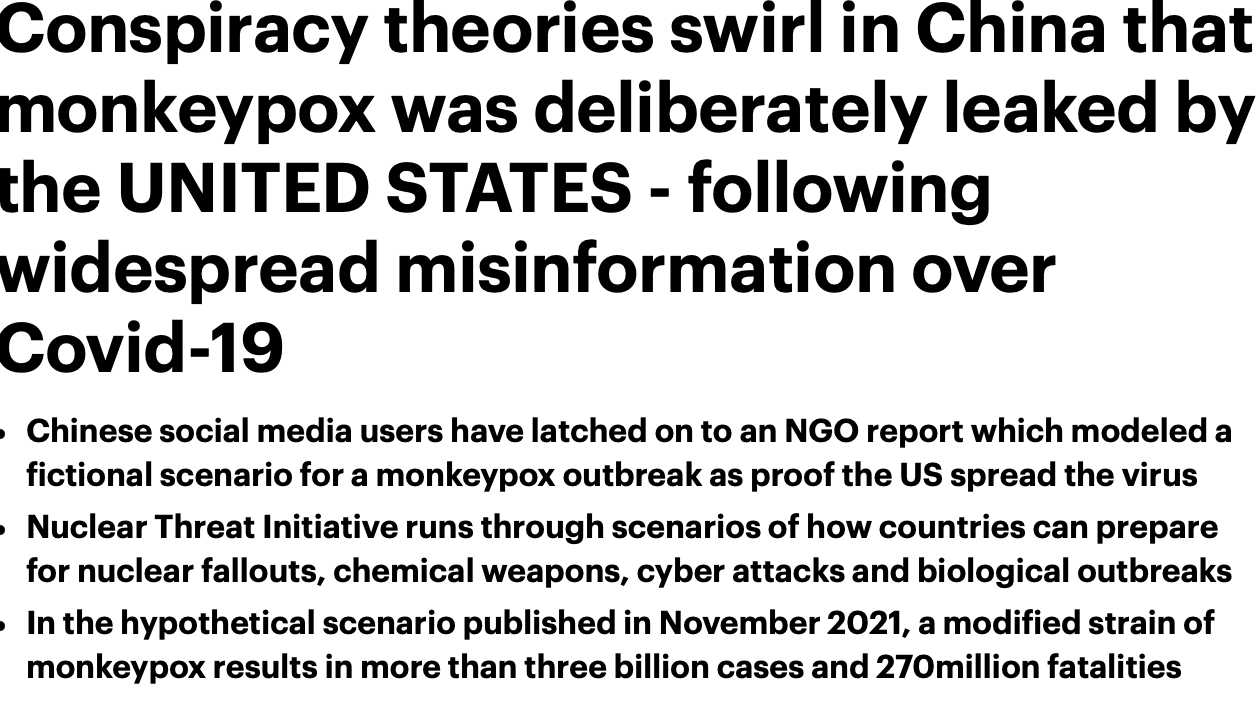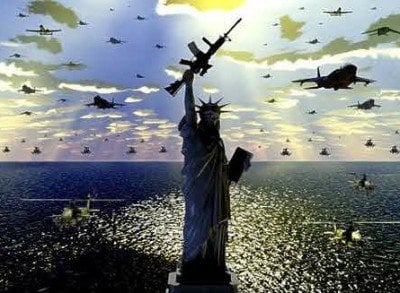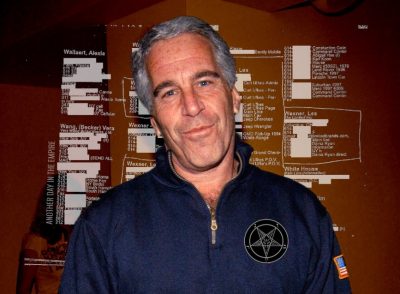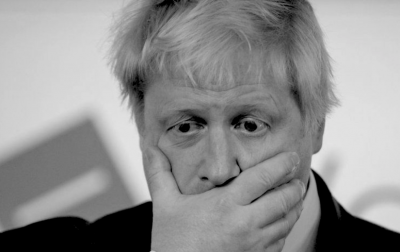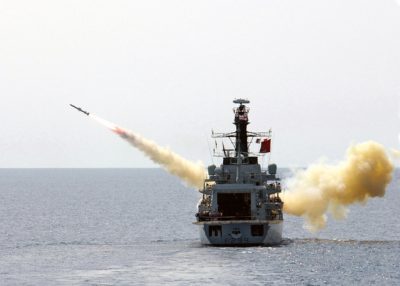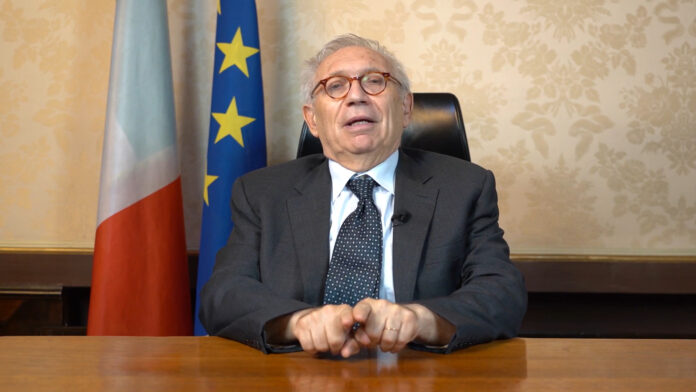For Bill Gates, It’s “Moneypox”: Simulation of Fictitious Monkeypox Virus Pandemic in March 2021, Goes Live in May 2022
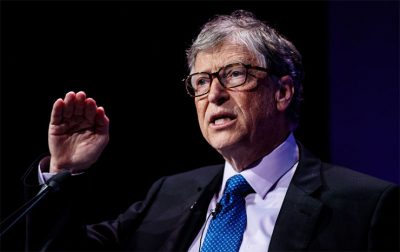
All Global Research articles can be read in 51 languages by activating the “Translate Website” drop down menu on the top banner of our home page (Desktop version).
To receive Global Research’s Daily Newsletter (selected articles), click here.
Visit and follow us on Instagram, Twitter and Facebook. Feel free to repost and share widely Global Research articles.
Latest Update June 1, 2022
***
Another Chapter of “Fake Science” is Unfolding
Say Goodbye to SARS-CoV-2, Say Hello to the Monkeypox Pathogen

Screenshot of November 4 2021 Article in Evening Standard
Possible “Monkeypox Terror Attacks” Announced by Bill Gates in November 2021
In a TV interview with Jeremy Hunt in early November 2021, Bill Gates warned governments to prepare for simultaneous smallpox terror attacks in 10 airports:
“You say, OK, what if a bioterrorist brought smallpox to 10 airports? You know, how would the world respond to that? There’s naturally-caused epidemics and bioterrorism-caused epidemics that could even be way worse than what we experienced today”, he said (emphasis added)
Ten Countries, Ten Airports. (That’s Where the Testing Takes Place)
Compare that to the latest news report on May 19, 2022, more than six months later (emphasis added):
An unprecedented outbreak of monkeypox virus has officially spread to 10 countries outside of Africa, with 107 confirmed or suspected cases reported as of this writing, in the United Kingdom (9 cases), Portugal (34), Spain (32), France (1), Belgium (2), Sweden (1), Italy (3), Canada (22), the United States (2), and Australia (1). (WSWS, May 19, 2022)
To watch the video interview with Bill Gates click below
Video Interview with Michel Chossudovsky on Moneypox Bill Gates
click lower right corner for fullscreen
Bill Gates’s February 2017 Warning of Bioterrorism: Deadly Strain of Smallpox Virus
This is not the first time that Bill Gates has warned governments of the dangers of a bioterrorist attack involving a deadly strain of the smallpox virus. The following announcement was made at the 2017 Munich Security Conference:
“The next epidemic could originate on the computer screen of a terrorist intent on using genetic engineering to create a synthetic version of the smallpox virus … or a super contagious and deadly strain of the flu.” (Munich Security Conference, February 2017, emphasis added)
Munich Security Conference, 2017
“Investing Billions in Research”. For Bill Gates, It’s “Moneypox”
On November 4, 2021 Bill Gates warned governments “to prepare for future pandemics and smallpox terror attacks by investing billions in research and development”.
Mr Gates made the warning during a Policy Exchange interview with the chair of the Health Select Committee Jeremy Hunt.
The Microsoft founder also called for the formation of a new billion-dollar World Health Organisation Pandemic Task Force.
He said that countries like the US and the UK must spend “tens of billions” to fund the research.
“I’m hoping in five years, I can write a book called, ‘We ARE ready for the next pandemic’, but it’ll take tens of billions in R&D – the US and the UK will be part of that”, he said.
“It’ll take probably about a billion a year for a pandemic Task Force at the WHO level, which is doing the surveillance and actually doing what I call ‘germ games’ where you practise.” (Evening Standard, emphasis added).
But there is more in this unfolding multibillion dollar monkeypox saga.
Is a New Fear Campaign in the Making?
The monkeypox simulation agenda was planned well in advance. It started in December 2020 with a meeting of senior U.S National security officials.
The Monkeypox Time Line
The Time Line is as follow:
- December 2020: US National Security and Biological Weapons Experts’ Meeting under the auspices of the Nuclear Threat Initiative (NTI). Planning and Formulation of a Simulation of a Monkeypox Pandemic,
- July 2020: FDA approval of Smallpox and Monkeypox Vaccine, “first permitted commercial marketing or use of the product” in US. (For details see below)
- March 2021 Tabletop Simulation of Fictitious Monkeypox Pandemic at Munich Security Conference 2021
- November 2021. Bill Gates warns governments of the likelihood of a monkeypox terrorist attack (see statements above)
- May 2022. WHO announcement. Towards a Monkeypox Pandemic? Unfolding Fear Campaign.
- Commencing May 2022. The marketing of Smallpox vaccines, effective against monkeypox.
- May 2022- : Ongoing propaganda in support of the WHO Pandemic Treaty (coupled with the QR Code).
December 2020: The Expert Planning of A Tabletop Simulation of a Monkeypox Virus Pandemic
As early as December 2020, a simulation of a monkeypox pandemic had been envisaged by the Nuclear Threat Initiative (NTI), a nonprofit organization, founded by former U.S. Sen. Sam Nunn and philanthropist Ted Turner.
Ted Turner has a close relationship with Bill Gates. He is a member of The Good Club which includes Warren Buffett, George Soros, Michael Bloomberg, Elon Musk, Jeff Bezos, Oprah Winfrey and many more. The Good Club is known for its resolve to “Try to Shrink World’s Population” according to the WSJ.
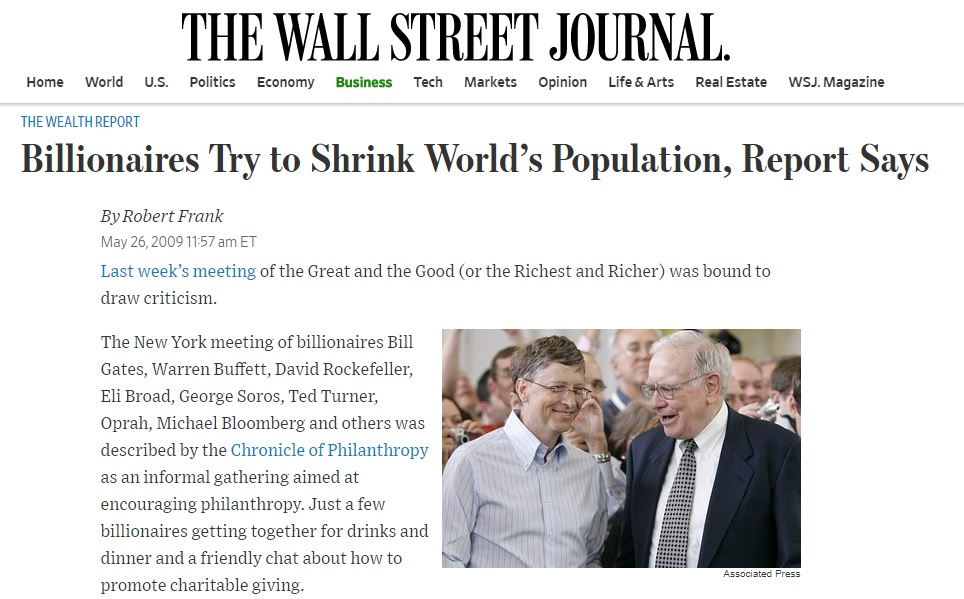
The NTI National Security and Biotechnology Advisory Group
At the December 2020 meeting, the NTI convened a group of experts to “advise” on the tabletop exercise scenario. Among the experts were senior officials, scientists and experts in bioterrorism and national security, from U.S. entities including the Department of Homeland Security, USAID, State Department, National Defense University, John Hopkins, Harvard T.H. Chan School of Public Health, Department of Health and Human Services, etc. (See page 27 of report)
“These experts participated as individuals—not as representatives of their respective organizations—and they do not necessarily endorse the recommendations in this report.”
March 2021: Fictional Exercise Scenario of a Deadly Monkeypox Virus Pandemic
A few months later following the December 2020 consultations, a Table Top Simulation of a: “fictional exercise scenario portrayed a deadly, global pandemic involving an unusual strain of monkeypox virus” was held by the NTI at the March 2021 Munich Security Conference:
The following NTI report entitled:
by Jaime M. Yassif, Ph.D., Kevin P. O’Prey, Ph.D., and Christopher R. Isaac, M.Sc.,
was undertaken by the Global Biological Policy and Programs, of the Nuclear Threat Initiative (NTI).
Generously Funded by Billionaire Philanthropy Foundation
The expert national security analysis, the report as well as the simulation exercise conducted under the auspices of the Munich Conference were generously funded by Open Philanthropy of which the main funder is multibillionaire Dustin Moskovitz, co-founder of Facebook (together with Mark Zuckerberg) and a friend of Bill Gates.
Billionaires fund billionaires. The grants allocated by OP to NTI’s Bio Security Program in February and May 2020 amounted to a modest $8.5 million.
A Note on the History of “Scenario Simulations” of Pandemics
Scenario Simulations of Pandemics were initiated with Rockefeller’s “Lock Step Scenario” in 2010 which consisted in the use of “scenario planning” as a means to carry out “global governance”. In the Rockefeller’s 2010 Report entitled “Scenarios for the Future of Technology and International Development Area” scenarios of Global Governance and the actions to be taken in the case of a Worldwide pandemic were contemplated.
More specifically, the report envisaged (p 18) the simulation of a Lock Step scenario including a global virulent influenza strain. The 2010 Rockefeller report was published in the immediate wake of the 2009 H1N1 swine flu pandemic.
And then in 2018, The Clade X Table Top Simulation was conducted under the auspices of the John Hopkins Center for Health Security.
Clade X was described by its organizers as a day-long pandemic tabletop exercise the purpose of which “was to illustrate high level strategic decisions in the United States and the world … to prevent a pandemic”.
It was “played by individuals prominent in the fields of national security or epidemic response”.
EVENT 201 (October 2019)
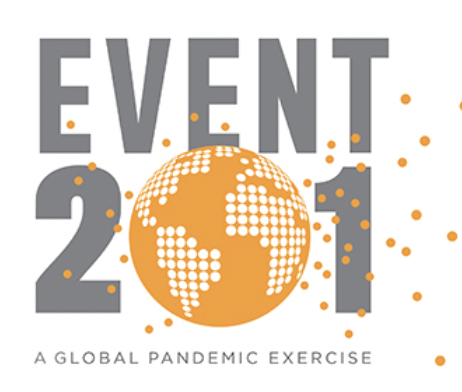 Clade X was followed by another tabletop simulation entitled Event 201 (also under the auspices of the Johns Hopkins Center for Health Security in October 2019). Event 201 pertained to a coronavirus epidemic entitled 2019-nCoV.
Clade X was followed by another tabletop simulation entitled Event 201 (also under the auspices of the Johns Hopkins Center for Health Security in October 2019). Event 201 pertained to a coronavirus epidemic entitled 2019-nCoV.
Among the 201 John Hopkins table top scenario “players” were key personalities holding advisory and senior positions in a number of core organizations. Less than 3 months later, these 201 “players” became actively involved in the policy response to the Covid-19 pandemic.
The Monkeypox Scenario Exercise Summary
Below is the executive summary of the March NTI Simulation (emphasis added) followed by relevant excerpts as well as the list of participants.
It is worth noting that while the December 2020 team which formulated the simulation project were exclusively from the US focussing on issues of national security, the participants of the Table Top Scenario were from Big Pharma, the Gates Foundation, the Wellcome Trust, WHO, UN, as well as representatives from the EU, China, Africa. (See list below)
In March 2021, the Nuclear Threat Initiative (NTI) partnered with the Munich Security Conference (MSC) to conduct a tabletop exercise on reducing high-consequence biological threats. Conducted virtually, the exercise examined gaps in national and international biosecurity and pandemic preparedness architectures and explored opportunities to improve capabilities to prevent and respond to high-consequence biological events. Participants included 19 senior leaders and experts from across Africa, the Americas, Asia, and Europe with decades of combined experience in public health, biotechnology industry, international security, and philanthropy.
The exercise scenario portrayed a deadly, global pandemic involving an unusual strain of monkeypox virus that emerged in the fictional nation of Brinia and spread globally over 18 months. Ultimately, the exercise scenario revealed that the initial outbreak was caused by a terrorist attack using a pathogen engineered in a laboratory with inadequate biosafety and biosecurity provisions and weak oversight.
By the end of the exercise, the fictional pandemic resulted in more than three billion cases and 270 million fatalities worldwide.
The Nature of the Simulation Borders on Ridicule: “Arnica Terrorists” Attack Brinia
The simulation has a geopolitical agenda. Terrorist attacks against Brinia, a sovereign nation-state.
Coincidence? The simulation is consistent with Bill Gates’ prophetic announcements in the course of the last five years pertaining to a terrorist attack using a lab modified version of the smallpox virus (See his 2017 and 2020 statements above):
Appendix B. Epidemiological Model Summary
Developed by Dr. Ellie Graeden Trae Wallace, Talus Analytics
The epidemiological elements of the exercise scenario were developed using a standard Susceptible– Exposed–Infectious–Recovered (SEIR) compartmentalized model. The model assumes no asymptomatic spread. The structure of the model is summarized in Figure B-1. A lab-modified version of monkeypox was intentionally released via aerosols in train stations in the fictional country of Brinia (population 250 million) by agents of a terrorist group operating in neighboring Arnica (population 75 million). [Arnica is a homeopathic medicine].
Through intentional modifications made by Arnican virology lab scientists sympathetic with the Arnican terrorists, this monkeypox strain is assumed to be more contagious than naturally occurring monkeypox— with a basic reproductive number (R0) for the modified strain of 3, as compared to 2.13 for the wildtype strain.11
The lab-modified strain is also engineered to be resistant to the smallpox vaccine.
Vaccine resistance is assumed to be driven by the introduction of the Interleukin-4 gene, as demonstrated in previous mousepox studies.12 We assume a case fatality rate of approximately 10 percent, which is consistent with previously described monkeypox outbreaks.13
When The “Real World” Resembles “The Scenario Simulation”
And it just so happens in the simulation that monkeypox was first reported on May 15, 2022, with 150 cases.
The release in Brinia results in 150 initial infections on May 15, 2022, and 10 inadvertently infected Arnicans. By June 1, travel from Brinia has seeded infections in the rest of the world.” (Monkeypox Simulation, emphasis added)
Below are the first “Two Moves” of the Simulated Scenario presented to the Munich Security Conference in March 2021. It identifies May 15 2022 as the commencement of the monkeypox epidemic, leading up to January 2023 (83 countries affected) to 70 million cases and 1.3 million deaths). (See page 10 of report)
Confirmed Cases Pertaining to the alleged “REAL” Monkeypox Outbreak
Visibly, May 15, 2022 as well as the 150 cases in the simulation bear a canny resemblance to the “REAL” press reports and WHO advisory concerning confirmed cases released in mid-May 2022.
Since 13 May 2022, cases of monkeypox have been reported to [the] WHO from 12 Member States that are not endemic for monkeypox virus, across three WHO regions. Epidemiological investigations are ongoing, …
As of 21 May, 13:00, 92 laboratory confirmed cases, and 28 suspected cases of monkeypox with investigations ongoing, have been reported to WHO from 12 Member States that are not endemic for monkeypox virus, across three WHO regions. (emphasis added)
These figures of confirmed cases put forth by the WHO are questionable. They were allegedly detected by the PCR-Test, which cannot under any circumstances identify the monkeypox virus. Moreover the PCR test is no longer recognized as valid by the CDC.
“all cases whose samples were confirmed by PCR [test] have been identified as being infected with the West African clade. (WHO) (emphasis added)
Fictitious Findings and Recommendations
To address these fictitious findings regarding the “Arnica terrorist attacks”, the players developed a series of far-reaching recommendations:
- The WHO should establish a graded, transparent, international public health alert system.
- Develop and institute national-level triggers for early, proactive pandemic response.
- National governments must adopt a “no-regrets” approach to pandemic response, taking anticipatory action.
- Establish an international entity dedicated to reducing emerging biological risks associated with rapid technology advances.
- Develop a catalytic global health security fund to accelerate pandemic preparedness capacity building in countries around the world.
These recommendations (which in all likelihood were discussed in December 2020 by the National Security and Biotech advisors prior to the conduct of the Simulation Scenario) are intended to support the WHO Pandemic Treaty (coupled with the QR Code) which consists in establishing a global digital data bank which derogates the rights of individual member nation states. The pandemic treaty is intent upon establishing the contours of a system of “Global Governance” dominated by the financial establishment.
It should be noted that two key participants of the Monkeypox 2021 NTI simulation were involved in the John Hopkins 201 Scenario (October 2019) which consisted in the simulation of a novel corona virus 2019-nCoV pandemic. These included Dr. George Gao Fu, head of China’s CDC and Dr. Chris Elias, President of the Global Development Division of the Gates Foundation, both of whom played a key role in staging the SARS-CoV-2 pandemic in early 2020.
And currently George Fu Gao is playing a key role in the implementation of China’s Zero Covid Strategy which has led to the lockdown of Shanghai in late March 2022, as well as in several other major urban areas.
A New Fear Campaign? Pandemic Preparedness in America. The Smallpox Vaccine Effective against Monkeypox
Governments have already placed orders for the delivery of smallpox vaccines effective against monkeypox.
While there were only two confirmed cases in the US of monkeypox recorded on May 18, the US government had already signed a contract with Bavaria Nordic consisting of an order of “millions of doses of a vaccine that protects against the virus” (Forbes).
The terms of this contract were in all likelihood negotiated prior to the announcement of the outbreak of the 92 monkeypox cases by the WHO on May 13.
Bavarian Nordic, the biotech company that makes the vaccine, has announced a $119 million order placed by the U.S., with the option to buy $180 million more if it wants. Should that second option be exercised, it would work out to approximately 13 million doses.
The order will convert existing smallpox vaccines, which are also effective against monkeypox, into freeze-dried versions, which have a longer shelf life.
How long is the “pandemic” slated to last?
“The converted vaccines will be manufactured in 2023 and 2024”, according to Bavaria Nordic (May 18, 2022.
Screenshot from Bavaria Nordic Announcement
The Role of Johnson and Johnson?
What the media has failed to acknowledge is the relationship between Johnson and Johnson and Bavarian Nordic, the Danish Biotech Company.
Bavaria North was a Partner of J and J until May 10, 2022, 3 days prior to the WHO official announcement pertaining to the alleged monkeypox outbreak.
The Global Head of J and J and Jannsen’s Public Health R&D is Dr. Ruxandra Draghia Akli, who participated in the Table Top Simulation on behalf of Big Pharma. (See list of participants above). Was the smallpox monkeypox vaccine developed by Bavaria Nordic in partnership with J and J?
The earlier Patent was registered in the US by Bavarian North. It was reviewed and first permitted for commercial marketing by the FDA on July 14, 2020, nine months prior to the NTI sponsored Scenario Simulation in March 2021 at the Munich Security Conference
Live (U.S. Patent No. 7,335,364) from Bavarian Nordic A/S, and the USPTO requested FDA’s assistance in determining this patent’s eligibility for patent term restoration. In a letter dated July 14, 2020, FDA advised the USPTO that this human biological product had undergone a regulatory review period and that the approval of Smallpox and Monkeypox Vaccine, Live represented the first permitted commercial marketing or use of the product.
As filed with the Securities and Exchange Commission on January 11, 2016: Bavaria North acknowledges its relationship to Johnson and Johson.
In China, Social Media has Gone Haywire
According to a Daily Mail Report
Note to readers: Please click the share buttons above or below. Follow us on Instagram, Twitter and Facebook. Feel free to repost and share widely Global Research articles.


